5 Marsupials Who Aren't Kangaroos
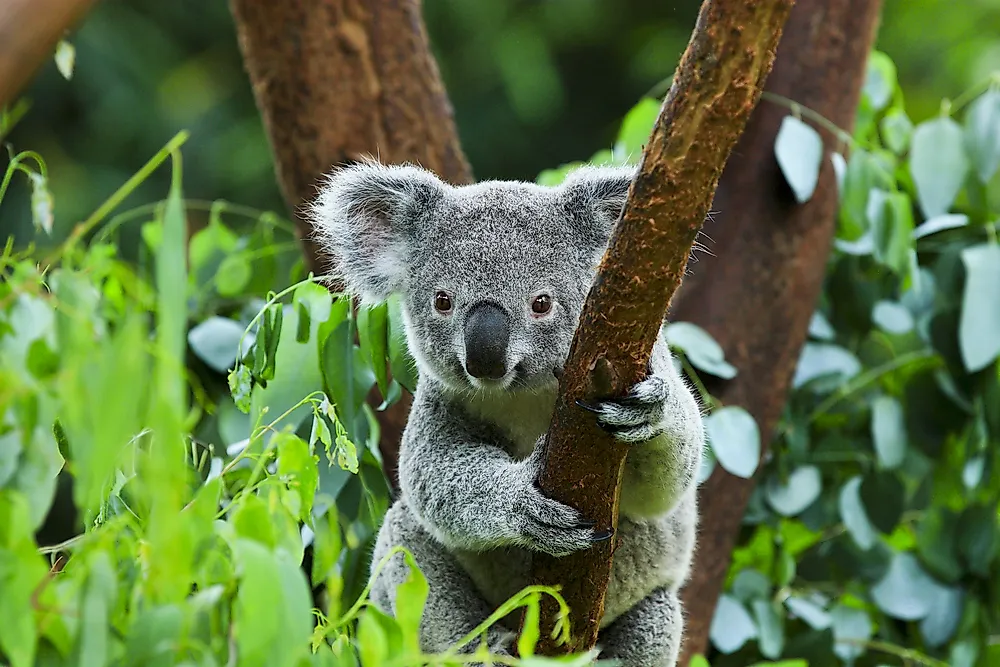
Marsupials are members of the mammalian infraclass endemic to Australasia and Americas. Most of the species carry their young ones in a pouch, which is a distinguishing characteristic. Marsupials give birth to relatively undeveloped young ones who reside with the mother in her pouch for a given period. The species have characteristics of mammals including the presence of the mammary gland and true hair. The pouch contains nipples which protect and sustains the young ones. They lack gross communication between the right and left brain hemisphere.
5. Thylacine
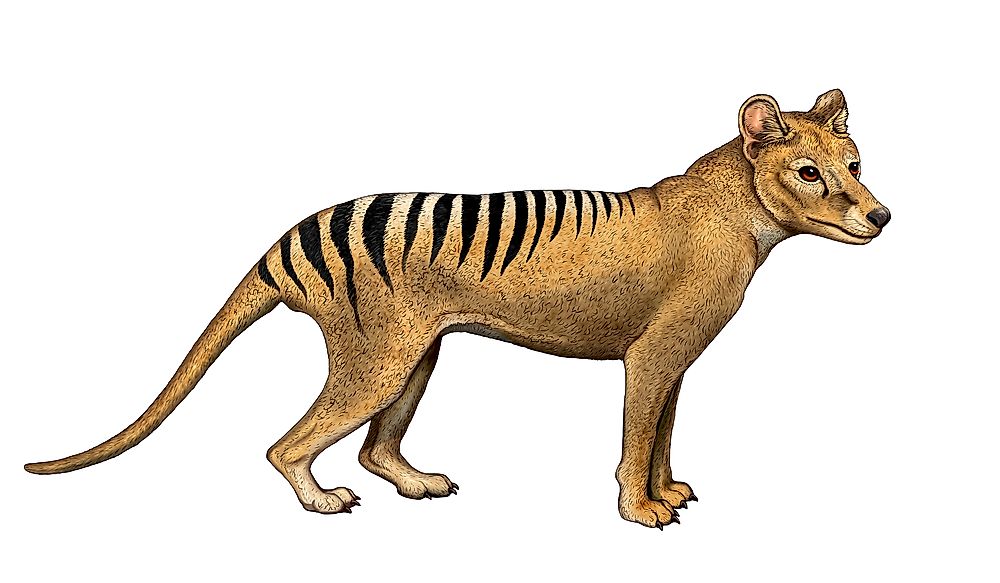
The Thylacine was always referred to as the "Tasmanian tiger" because it had black stripes on the lower back. It become extinct around the 20th century. The Thylacine resembled a large dog with a stiff tail extending from the body, similar to a kangaroo. Its brown coat featured about 13 black stripes on the lower back. A mature Thylacine measured 31 to 59 inches long and weighed between 40 to 70 pounds. The female had a pouch that opened to the rear of its body. The thylacine was naturally a shy and nocturnal animal preferring the dry eucalyptus forest.
4. Wallabies
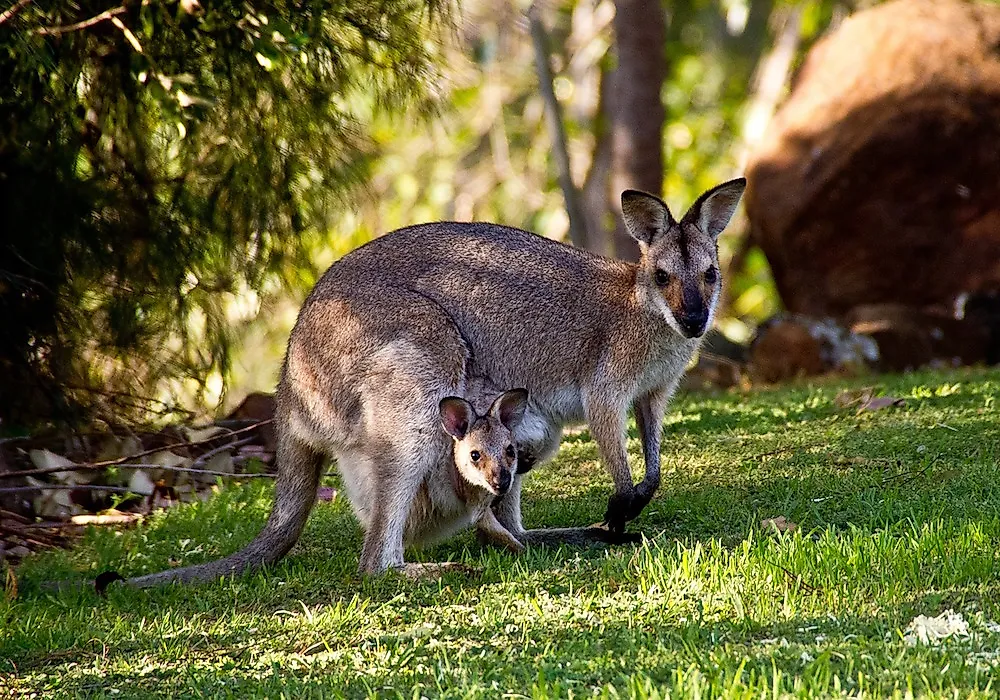
Wallabies are mid-sized macropods found around Australia and New Guinea. They belong to the same family as kangaroos. "Wallaby" is a general name used for any macropod that is smaller than the kangaroo. A wallaby has a body and head length of 1.5 to 3.3 feet with a tail that is between 1 to 2.5 feet long. They have powerful hind legs that are not only used for bouncing and jumping but also for fending off a potential predator. A wallaby uses its powerful tail for balancing and support. Their diet consists of vegetables, grass, and leaves. They are distributed across Australia, particularly in remote areas. Wallabies face several threats from predators including wild dogs and feral cats. Their interaction with humans also pose a threat to them.
3. Tasmanian Devil
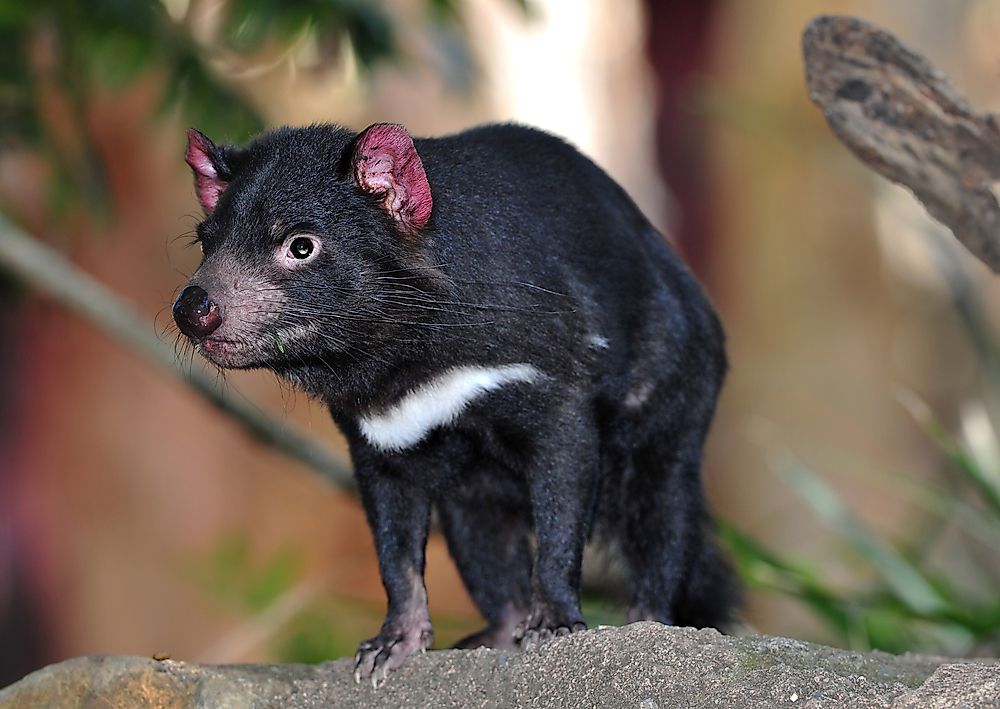
Tasmanian devil is a carnivorous marsupial found in Australia characterized by a stocky and muscular body that is covered with black fur. It produces a pungent smell and is an extremely vocal animal. It is the largest surviving carnivorous marsupial. Its hind legs are shorter than the forelimbs, and it can run for 8.1 mph over short distances. Males are larger than females with a head and body measuring 26 inches long and weighing about 18 pounds. The Tasmanian devil has five long toes on its forefeet with four pointing to the front and one pointing to the side. It is a nocturnal animal that spends most of its daytime in bushes. Its diet is widely varied depending on the availability of food.
2. Koala
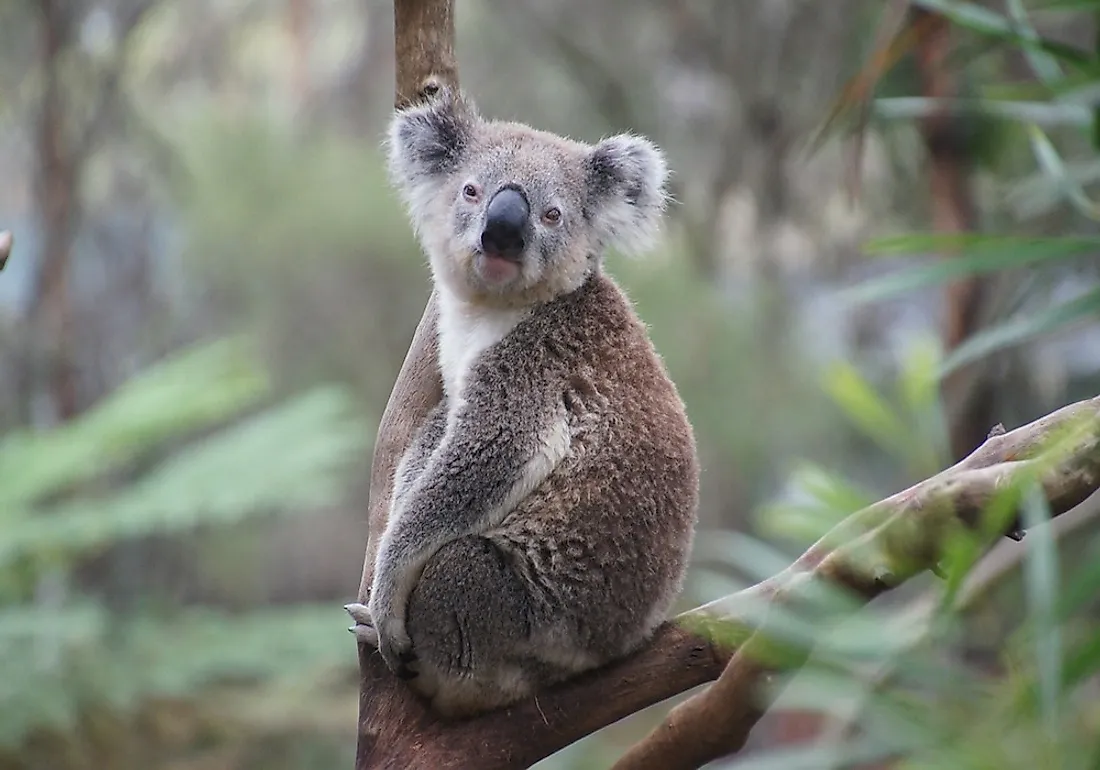
The koala is native to Australia and the closest living relative to the wombat. It is easily identified by its stout, tailless body, and fluffy ears. Koala has a body length of about 24 to 33 inches and weighs 9 to 33 pounds. The males are 50% larger than the female and have more curved noses compared to the female. The female’s pouch is tightened by the sphincters that prevent the young one from falling. The back fur varies from gray to brown while the belly is whitish. Koalas are herbivores with their diets consisting of leaves and grass. They are asocial animals and spend only 10 to 15 minutes a day socializing.
1. Bandicoot
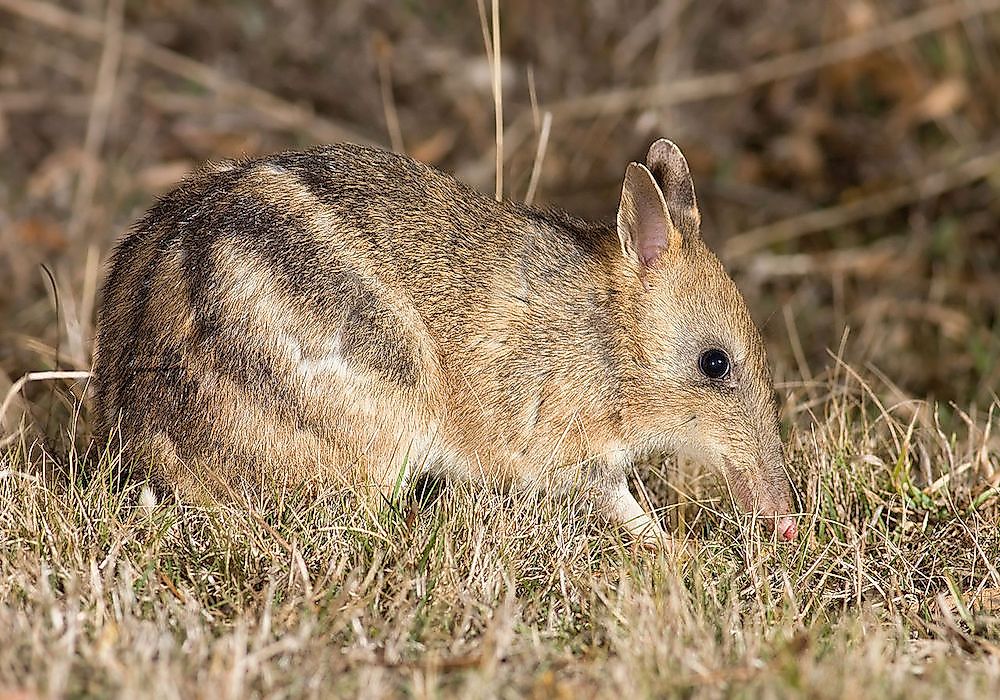
Bandicoots are a group of small to medium-sized terrestrial marsupials. The bandicoot is endemic to Australia and New Guinea regions. They are small in size and have a pointed snout and humped back. The common Bandicoot species include long-nosed, Northern brown, and Southern Brown. They mainly forage at night with their diet consisting of insects, spiders, plant roots, and tubers. Half the species are threatened or extremely rare. They also live for 2 to 4 years making it difficult for them to reproduce to the required level to sustain their existence in extreme environments.











